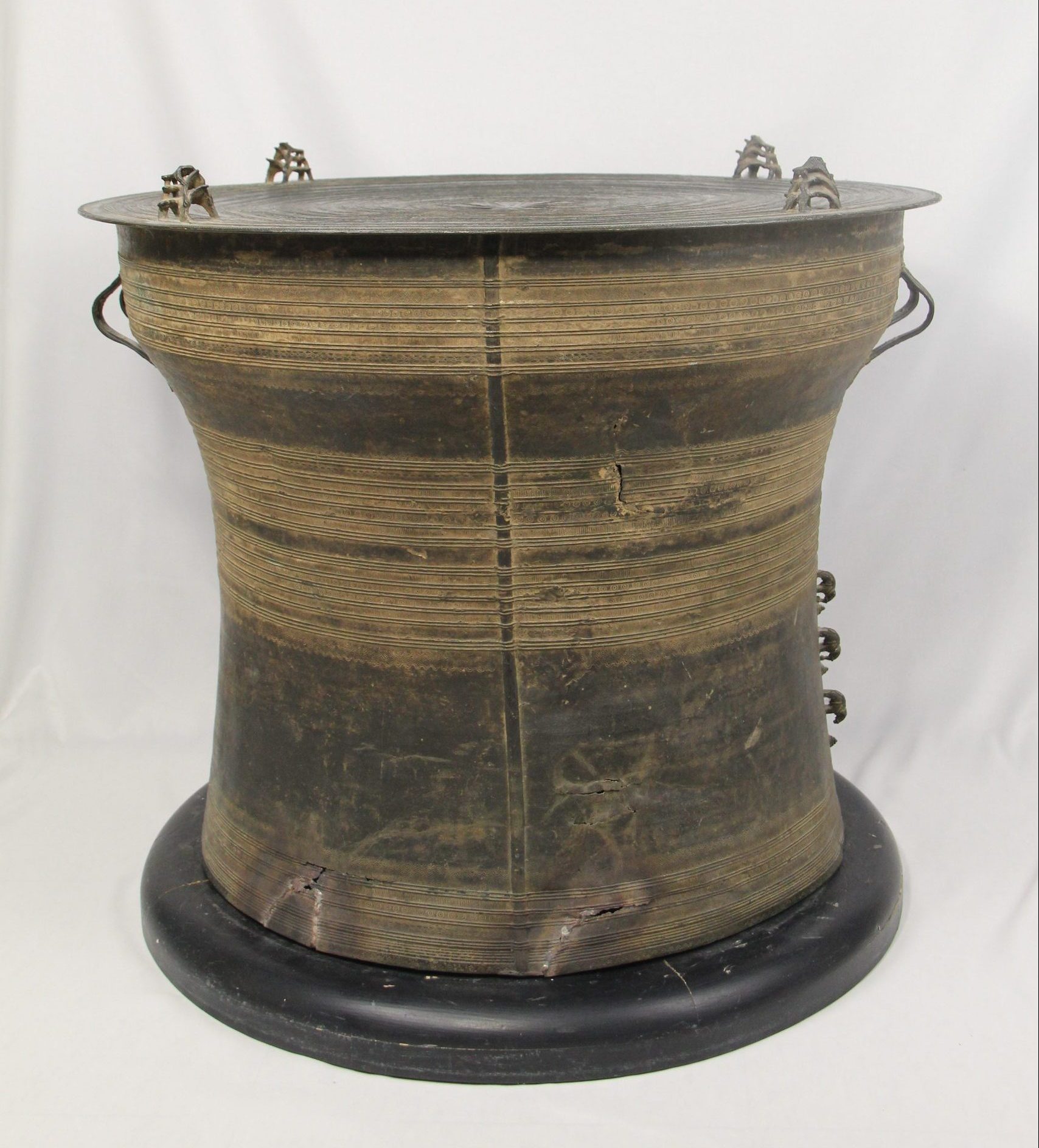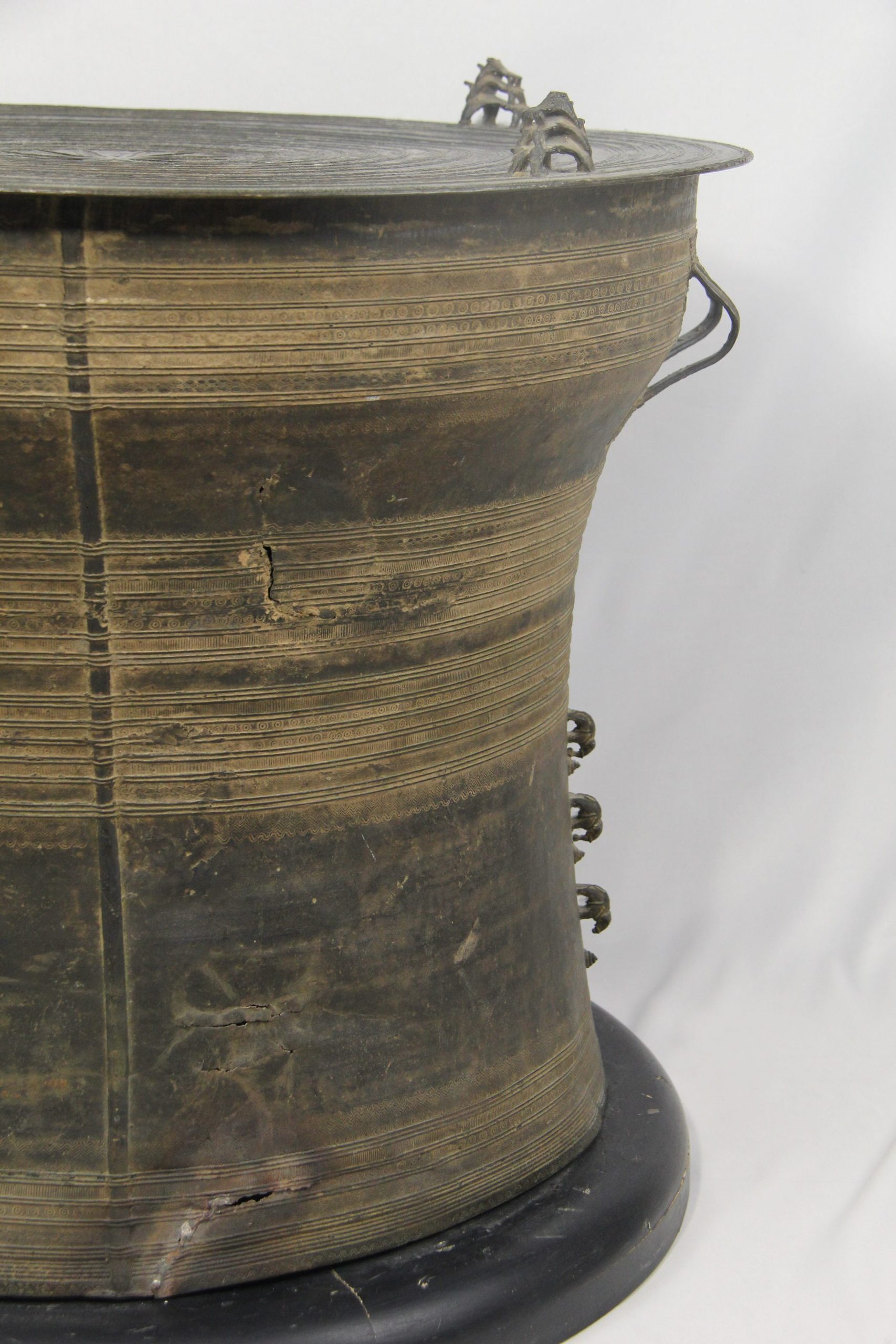Rain Drum
Details
- Origin: Southwest China
- Date: 2nd Century
- Maker: The Karens
- Collection: DUMIC 21
Description
Hollow bronze drum, tapers downwards, with handles on each side. The top, called a “tympanum,” has concentric rings and patterns around a central star design, and four decorative frogs equidistantly placed around the edges.
Various nations have laid claim to the rain drum as a prized invention of their own, including China, India, Thailand, and Vietnam. According to archaeologists, that debate is no debate: the rain drum originated in what is now Vietnam during the 5th century B.C.E., with some saying it may have been around all the way in 2500 B.C.E. It was first made as a ceremonial drum by the Dong Son civilization, which dates back to 1000 B.C.E. The Dong Son also incorporated it as a war drum and element of funerals, both as a ritual instrument and as an urn. The rain drum would go on to spread throughout southeastern Asia and beyond with the dawn of the Bronze Age.
The rain drum has been widely integrated into various cultures as a symbol of fertility, one of which is that of the Karen people or Myanmar (formerly Burma) and northern Thailand, bordering China. The Karens hold it as one of their most sacred ritual artifacts, used to please the “nats,” or spirits that live within trees and water. Among them, ownership of a rain drum brought great status. These drums have often been decorated with frogs, symbolizing rainfall. Rain drums are actually named as such because of the sound they make when struck with rain from the many monsoons that occur in southeastern Asia.
Sources
“Dongson Rain Drum or Frog Kha Drum.” Primitive: Living + Collecting. Primitive Inc. Accessed June 17, 2022. https://www.beprimitive.com/stories-descriptions/dongson-rain-drum-or-frog-kha-drum.
Jussel, Chris. “A Southeast Asian Bronze Rain Drum.” Chris Jussel Antiques. Accessed June 17, 2022. https://www.chrisjussel.com/past-sales/a-southeast-asian-bronze-rain-drum.





